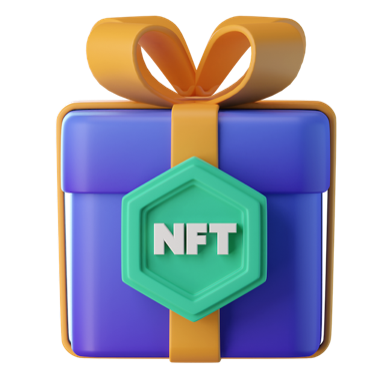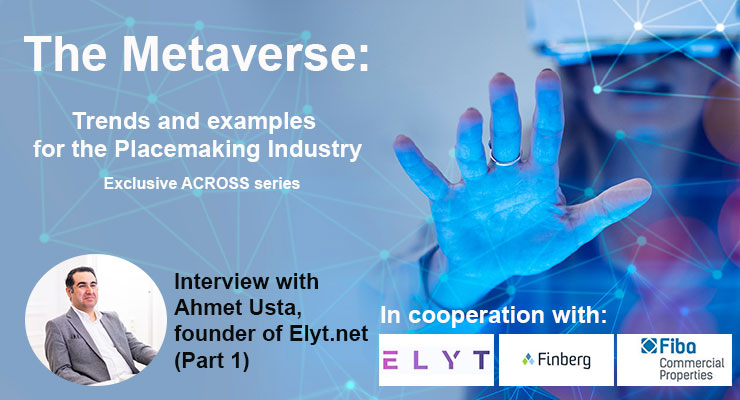ACROSS: After the conventional Internet 1.0 and the social media-based collaborative Internet, we are now facing the transition to the Metaverse.
Ahmet Usta: To get to an answer, we first need to define the concept of the Metaverse. The Metaverse is defined as a virtual world where people interact with each other and objects in this world through their virtual characters (avatars). The term Metaverse was first used by Neal Stephenson in his science fiction novel Snow Crash in 1992. This was still an early stage for the internet.
There have been unique developments in computer technologies from the 1990s to the present day at an incredible pace. Within a short period of less than 30 years, supercomputers have entered our pockets. Almost everyone is now connected to the internet 24/7. A significant part of our lives is spent sharing our lives on social media networks or following what others are doing. The finance and retail sectors have integrated into this digital world. On the other hand, the advances in the realism of 3D games and artificial intelligence technology provide a unique opportunity to create virtual worlds. Moreover, virtual reality devices like glasses and gloves now have accessible costs for everyone.
The Metaverse – A big need for knowledge
Without a doubt: The Metaverse is the megatrend of this year and the years to come. This became more than evident at the 2022 MAPIC meeting of the ACROSS Advisory Board. At the same time, hardly any other topic makes even the most experienced industry experts feel so insecure. NFTs, avatars, holograms, and blockchains – are all part of the Metaverse, a network of offline and virtual worlds and buzzwords in the industry. At the same time, the industry is just taking baby steps in their daily work to come up with metaverse solutions. What real solutions for the placemaking industry should look like and, even more so, how these are implemented has so far remained largely vague. Last but not least, the discussion in Cannes shows that the industry needs more knowledge about the mechanisms, opportunities, and examples of concrete applications. To achieve this, ACROSS has teamed up with Elyt.net, Finberg, and FİBA Commercial Properties to create an editorial series to provide first-hand content on how shopping places can benefit from the Metaverse. In the first part Ahmet Usta, the co-founder of Elyt.net, “translates” the metaverse for our industries.
ACROSS: What will the future of the Internet in the Metaverse look like from the user’s point of view?
Usta: For many years, the film industry has been making movies about how virtual worlds will become a part of our lives. Metaverse is being introduced as a new communication and even life protocol where more and more people will spend a significant part of their lives interacting with each other and their surroundings. People’s perception is also developing in this direction. Since mobile phones and the internet dominate a significant part of our lives, why not take a step further and enter these virtual worlds? It is an unlimited space of freedom, a gateway to endless adventures, and virtual offices where we can work while lying in our homes beyond just entertainment. As new skyscrapers and houses become increasingly challenging to build in modern cities, we have a vast construction area with unlimited space. It has the potential to eliminate the dimension of space for humanity. The interest of technology giants (Big Techs) in this area, and especially Facebook’s rebranding of its parent company umbrella to Meta in 2021, has raised the bar and expectations for virtual realms. And here we are, talking about how Metaverse will change the world.
ACROSS: What is, according to you, the biggest misconception about the Metaverse?
Usta: There is an apparent misconception about the Metaverse that most people are hesitant to admit. This misconception needs to be addressed under two different headings. The first is the necessary accessories (virtual reality headsets or glasses) to access the promised sacred Metaverse territories. If you haven’t gained experience with these technologies before, it creates a shock effect in our brain. While your body remains still, you signal to all your senses that you are moving. Severe vertigo and nausea do not allow for long-term use of these technologies. You can spend long hours on Instagram or TikTok, but this time is limited to 30 minutes in three-dimensional virtual Metaverse worlds. It will take some time to solve this problem. On the other hand, you don’t necessarily need virtual reality accessories to enter these worlds. You can enter virtual environments with a traditional monitor, keyboard, mouse, or mobile phone. At this point, our second heading question arises; why are almost 20-year-old examples like World of Warcraft with a history of over 10 million people gathering, Farmville, where millions of people farm, and Fantasy Role-Playing Games (FRP) played on the desktop like Dungeons & Dragons, not considered Metaverses? With hundreds of examples going back 20 years, why has the Metaverse become so popular?

NFTs are one-of-a-kind digital identifiers that cannot be duplicated, replaced, or subdivided. They are stored on a blockchain to validate and demonstrate authenticity and ownership. The metaverse is a virtual environment centered on social interaction that uses the power of technology to enhance the experience and make it more natural within the space. The primary difference between NFTs and the metaverse is that NFTs are virtual tokens, whereas the metaverse is an entirely virtual space. NFTs act as asset ownership representations in the metaverse. Land within the metaverse, for example, can be an NFT that individuals can purchase and use as proof of ownership. NFTs are the “value elements” that can exist in the metaverse.
ACROSS: But before we answer this question, let’s transfer our current user behavior to that in the Metaverse. How might communication, work, consumption, and leisure activities proceed in the Metaverse?
Usta: Actions such as communication, work, consumption, and entertainment are essentially fixed. The channels and interactions in which these actions are performed can change. People laughed by watching plays in Ancient Greek Theatre 2,500 years ago, and now they laugh by watching TikTok videos. The action has not changed; only the environments that trigger the action have changed. Before the pandemic, everyone was hesitant about remote working, and now we are discussing how meaningful it is to return to offices. The Metaverse alone will not change human behavior; it will add a new one to the environments and channels where they occur. Radio, cinema, and television achieved this unilaterally. The Internet rapidly transformed unilateral interaction into mass bilateral interaction. The Metaverse aims to enter our lives as a new channel, not a new interaction type. However, there will be a significant revolution here, hidden in the unanswered part of the previous question.
ACROSS: What would be a brief description of the technology behind the metaverse?
Usta: Let’s go back to why we don’t call the millions of people who have already been interacting in virtual worlds using gaming technology for the past 20 years “Metaverse”? The answer is much more straightforward than you might think. When the service providers who provide these worlds pull the plug, these worlds are doomed to disappear. The life you’ve built, the things you own, and the value your interactions create in these worlds… None of them belong to you. Metaverse should be a world where you can control all these values. It is an upper universe where you are not bound by the limits set for you, have absolute property rights over your assets, and can freely take them to different universes. This is also where the meaning of the word “Metaverse” comes from; “Meta” means “Beyond” in ancient Greek, and “Verse” means “Universe.” The all-encompassing upper universe beyond all others is the “Metaverse.”
For a long time, computer scientists and mathematicians searched for a solution that could give users the absolute ownership of digital data in a decentralized way. However, the person who found this solution still maintains the mystery of their real identity under the pseudonym Satoshi Nakamoto. Blockchain technology was born with the article “Bitcoin: A Peer-to-Peer Electronic Cash System,” published in an internet forum in 2008. A blockchain is a protocol approach that enables establishing trust relationships with immutable and unchangeable data records among multiple participants without a centralized management mechanism. These systems use the power of mathematics and technology. Data that can be copied infinitely can be limited in a Blockchain network. Property rights belong absolutely to the data owner, and they can dispose of it freely. An external force can’t change it or take over ownership. At this point, we are not discussing software errors and personal vulnerabilities but taking a philosophical approach based on technology. Although Bitcoin was designed as an alternative solution to the traditional fiat cash system, the blockchain technology it created has a revolutionary feature in human history. It can serve as a trust protocol without intermediaries. Not only people but also businesses and even algorithms can use this protocol.
ACROSS: What is the connection between the big buzzwords Blockchain, NFTs, and Metaverse?
Usta: NFTs, or non-fungible tokens, are particular crypto-assets created on blockchain networks. They represent another digital asset, such as a license or deed, and can be paired with real-world physical items. While you can make infinite copies of a single photograph taken with your phone by pairing that image with an NFT on a blockchain network, the NFT serves as a certificate of uniqueness. There are countless copies of the Mona Lisa painting, but only one original is housed at the Louvre Museum in Paris. So why not use the power of blockchain networks to uniquely certify digital assets that could otherwise have infinite copies with a single NFT certificate?
Examples of NFT applications
Art: NFTs have been used to sell digital art, including music, videos, and images. Artists can now sell their works directly to collectors, and the ownership can be verified and transferred through the blockchain. For example, in March 2021, an NFT artwork by Beeple sold for $69 million at Christie’s auction house.
Gaming: NFTs have also been used in the gaming industry, where players can buy and sell unique digital assets such as weapons, skins, and characters. Games like Axie Infinity, Decentraland, and The Sandbox have already implemented NFTs into their ecosystems.
Real Estate: NFTs can represent ownership of real estate properties. This provides a more secure and efficient way to transfer ownership without the need for intermediaries like lawyers and banks. For example, a luxury apartment in Miami was recently sold for $22.5 million using an NFT.
Collectibles: NFTs have been used to create and trade digital collectibles, such as sports memorabilia, trading cards, and virtual items. The NBA has created an NFT marketplace called Top Shot, where fans can buy and sell digital basketball cards.
Royalties: NFTs can also represent intellectual property ownership, such as music, videos, and other media. This allows creators to earn royalties from their work even after selling it. For example, musician Grimes sold an NFT album for $6 million, and the buyers will receive a share of the future royalties from the album’s sales.
Here is the answer we’ve been looking for. Metaverse is an environment and application where digital assets are singularized with NFTs, and absolute ownership rights are given to their users on top of blockchain technology. Game companies prohibit you from selling the virtual character that you have developed with years of time and effort! Why? They prohibit you from transferring the usage rights of a valuable object that nobody else can access! Why? When the game server is shut down, everything disappears into thin air! However, in a real metaverse universe, everything is integrated with assets on the blockchain network. You can transfer these assets to different platforms. You can take your fantasy character from one game to another or sell it for a specific price.
Learnings:
1. The Metaverse is an unlimited space of freedom where you can work and live beyond entertainment. It has the potential to eliminate the dimension of space for humanity.
2. The Metaverse alone will not change human behavior; it will add a new one to the environments and channels where they occur.
3. Metaverse is an environment and application where digital assets are singularized with NFTs, and absolute ownership rights are given to their users on top of blockchain technology.

Ahmet Usta and Elyt.net
Ahmet Usta graduated with a bachelor’s degree in aerospace engineering from Istanbul Technical University in 2001 and earned his MBA from Yildiz Technical University in 2007. He has served as an IT Manager for various companies until 2014. During this time, he also served as the Technology Editor of Bloomberg Businessweek Turkey Magazine. Before founding Mercek Tech in 2017, Usta implemented technical and administrative projects to establish and manage digital and print media channels for different media companies. Then continue to deliver company journalism solutions with Mercek Tech. As a professional keynote speaker, lecturer, and advisor in Turkey, Usta specializes in Blockchain technology. He is a Co-Founder of ELYT.net, a next-generation Customer Loyalty and Marketing platform that utilizes blockchain technology and NFT assets. The vision of ELYT.net is to become a Metaverse Platform for Loyalty Programs.
More about the Metaverse:
ACROSS has teamed up with Elyt.net, Finberg, and FİBA Commercial Properties to provide first-hand content on how shopping places can benefit from the Metaverse. Stay tuned for articles on:
+ Second part of the interview with Ahmet Usta
+ Technological environment and investment opportunities
+ Business cases within the placemaking industry
+ The solution: Live session on a concrete product presentation in cooperation with Elyt.net and Fiba






